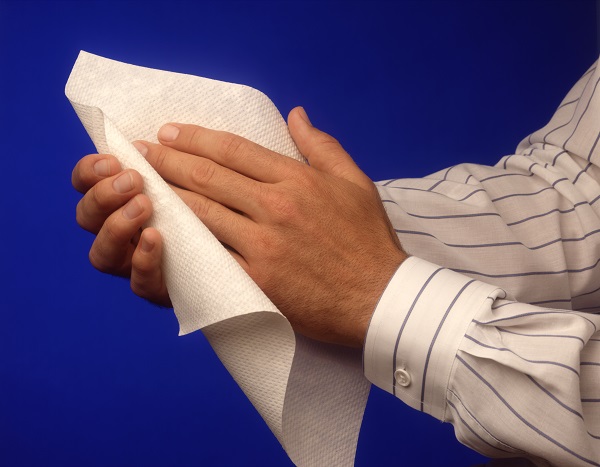Did you know that around 80% of diseases can be transferred via touch? Damp hands can spread germs up to 1000 times more than dry hands, so a quick shake-off after washing isn’t enough to keep you or your colleagues safe.
The debate over the best technique for hand drying has raged for years, and there are a number of valid arguments for each side. The environment, cost, user preference and hygiene standards affect our choices between paper towels and hand dryers, especially knowing that air-drying or wiping them on our clothes is the least hygienic option.
Environment
Recycled paper or virgin paper? How much greenhouse gas between hand dryers and paper towel dispensers? These are the big issues when it comes to the environmental impact of hand drying.
A hand dryer may not be produced through environmentally friendly means, with the source material being mostly plastics and metals. On the other hand, not all paper towel comes from environmentally sustainable forests or is made from recycled paper waste.
In terms of longevity, paper is single use only, whereas the life-span of a hand dryer is between 7 to 10 years. Standard hand dryers and paper towel are neck and neck with 20g of greenhouse gas per use, but newer jet hand dryers lead the way with only 3g. The carbon footprint of paper towel increases significantly if it’s not recycled after use, and there are always those people who use far more than the standard two sheets.
Cost
It’s worth comparing the cost of refilling your paper towel holder against the cost of electricity, and how many people are likely to use the facilities in your workplace. A high traffic area will have different needs to a small office, and the health cost of people not drying their hands properly will be far higher, so choose carefully.
For long-term cost savings, hand dryers and recycled paper towel offer similar outcomes. It’s estimated that by using recycled paper, costs can be reduced by up to 40%. Where regular paper is used, hand dryers are more cost-efficient, making them a winner for the budget as well as the environment.
User Preference
Time is a big factor in people not correctly drying their hands. Most air dryers take around 45 seconds to complete the process, and who has time for that?
Paper towel, on the other hand, only takes 10 to 15 seconds, and jet dryers can be as fast as 10 seconds. Speedy hand drying is a convenience that needs to be addressed, not just for happy employees, but also to reduce the risk of contamination.
People also prefer using paper towel, as discovered by the University of Queensland. They concluded that up to 64% of people preferred paper towels dispensers, with only 28% demonstrating a clear preference for dryers. If catering to people’s preference means they’ll dry their hands properly, then this needs to be considered when providing washroom options. Dry hands are cleaner hands, after all.
Health
As it turns out, dry hands may spread less bacteria, but hot air can actually increase germs significantly.
The heat from air dryers encourages bacteria to multiply by up to 254%. Paper towels, on the other hand, can reduce bacteria by up to 77%. An air dryer can also spread micro-organisms around, blowing them up to 30cm away from the source. Jet dryers are even more powerful, blasting those germs up to 2m.
Now imagine someone hasn’t washed their hands properly and dries off at one of those hot-air germ-distributers!
While jet dryers may lead the way for speed and environmental standards, their effect on hygiene sets them further back when it comes to health.
These four factors all impact on business function and staff wellbeing, and it’s worth thinking about their rating of importance before making a decision.

